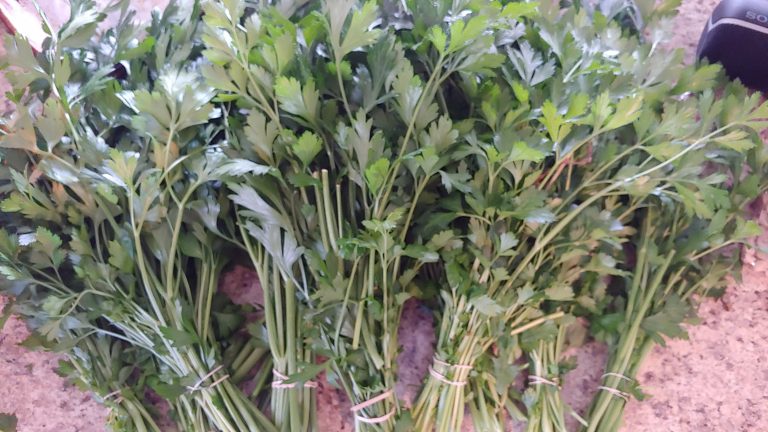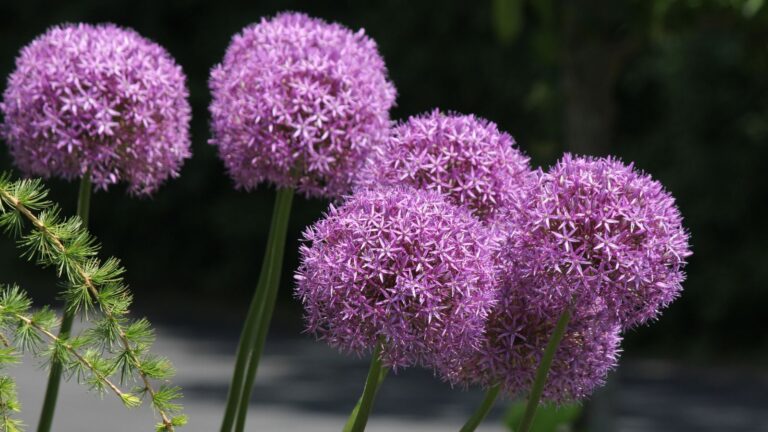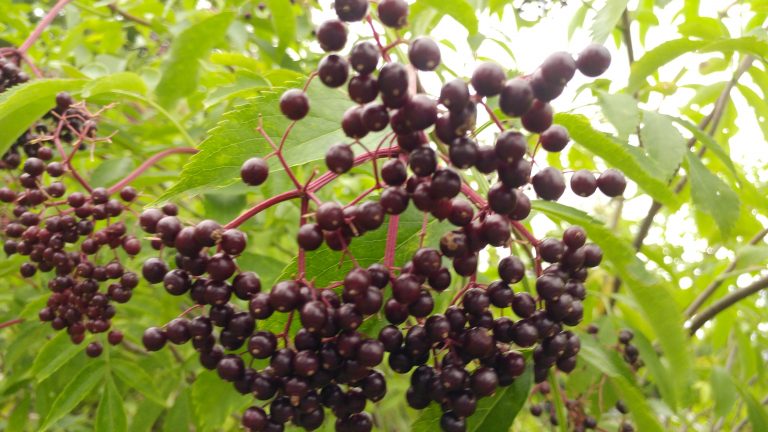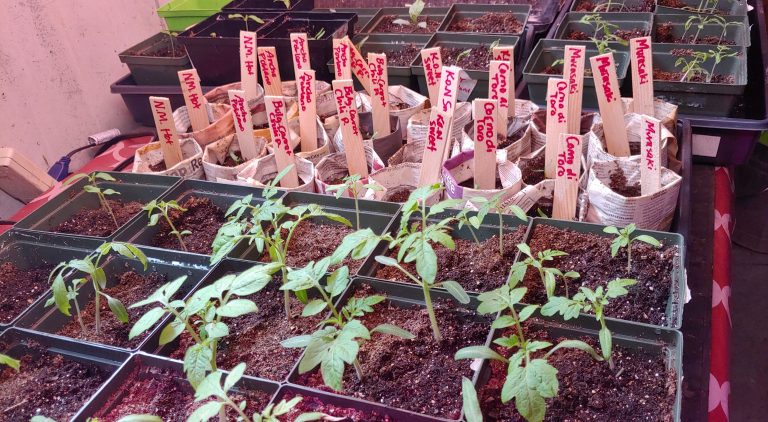This post may contain affiliate links.
One key to getting the most delicious apples from your home orchard is pruning your apple trees. Pruning not only helps the tree produce more fruit but also improves the overall health of the tree and helps it be more resistant to pests and diseases. In this article, we share the basic information you’ll need to learn how to prune apple trees. We cover why to prune, when to prune, which branches to cut, how much to cut each year, and what tools to use. We will also discuss when it is best to hire a professional arborist!
Keep in mind that these same practices can be applied to pruning other fruit trees, such as crabapples, peaches, plums, and pears. In fact, almost all plants are happy with a little bit of pruning – you can also check out our article on pruning tomatoes in the summer!
Why do you need to prune apple trees?
There are many reasons to prune your apple trees. Some of these include:
- Pruning removes the older, less productive branches and stimulates new growth.
- Pruning improves air circulation around the branches so they don’t become diseased due to insects or fungi (which can lead to dropping leaves prematurely or to infestation of fruit).
- Pruning helps keep your trees healthy by removing dead or damaged limbs, which can become infected with pests and disease.
- Pruning reduces competition among limbs competing for light and water resources (e.g., pruning out smaller side-branches allows bigger ones to grow stronger without having any competition).
- Pruning also improves the overall appearance of a tree by pruning back branches that are too big for their location or that cross over others.
All of these benefits combined lead to higher quality, healthier fruit on your apple trees come harvest season. Your trees will also be easier to manage if you keep up with pruning annually.
When should you prune apple trees?
You should prune your apple trees in the winter when they are dormant. This is typically in December or January but can vary depending on your location and the type of apple tree you have. In Vermont, our trees can stay dormant through February so we sometimes wait for longer days to do our pruning.
If you prune your trees too early, there’s a chance that frost could damage new buds formed during pruning; this is less likely if pruned after January.
If you prune your trees too late, growth will be inhibited and the fruit won’t have enough time to ripen before fall.
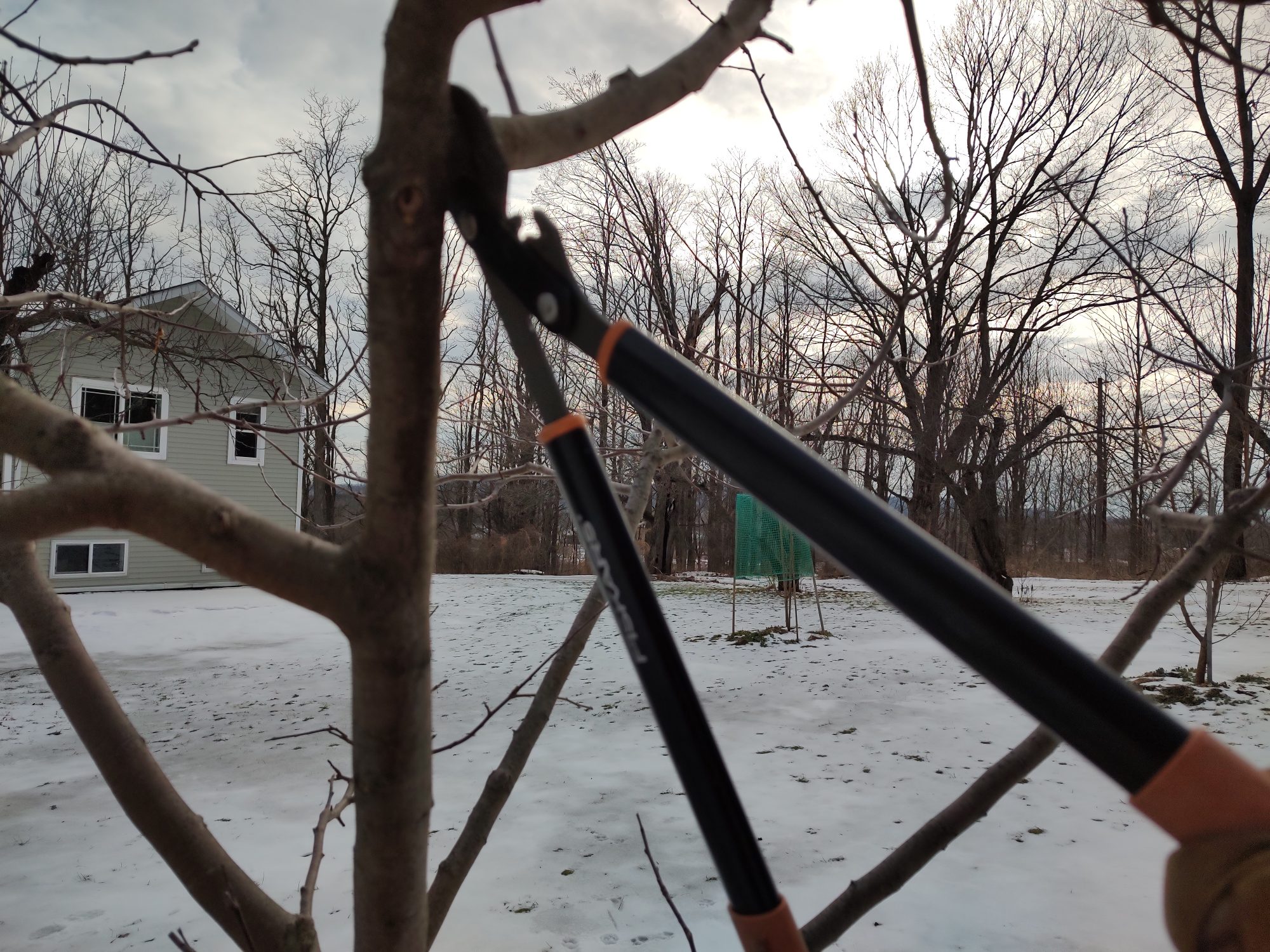
What tools do you need to prune an apple tree?
You can use pruning shears (we highly recommend Fiskar’s), pruning saws (long thin saws designed for cutting limbs, like this one), or pruning loppers (long-handled shears that give you leverage to make bigger cuts, like these ones also from Fiskar’s) to prune your apple tree. A pole pruner is also helpful if you need to reach branches that are out of reach.
You will also likely need a ladder to reach higher branches if you feel comfortable using it.
If you need to remove a large branch (more than 3-4 inches in diameter) you may need a chainsaw; we use our EGO Electric Chainsaw for this purpose. Or, you can call a professional arborist. An arborist may also be helpful if you have an older tree that is overgrown and you need help making a plan to get it back into healthy condition.
Make sure to disinfect your tools before and after use with rubbing alcohol so they don’t spread disease from one tree to another.
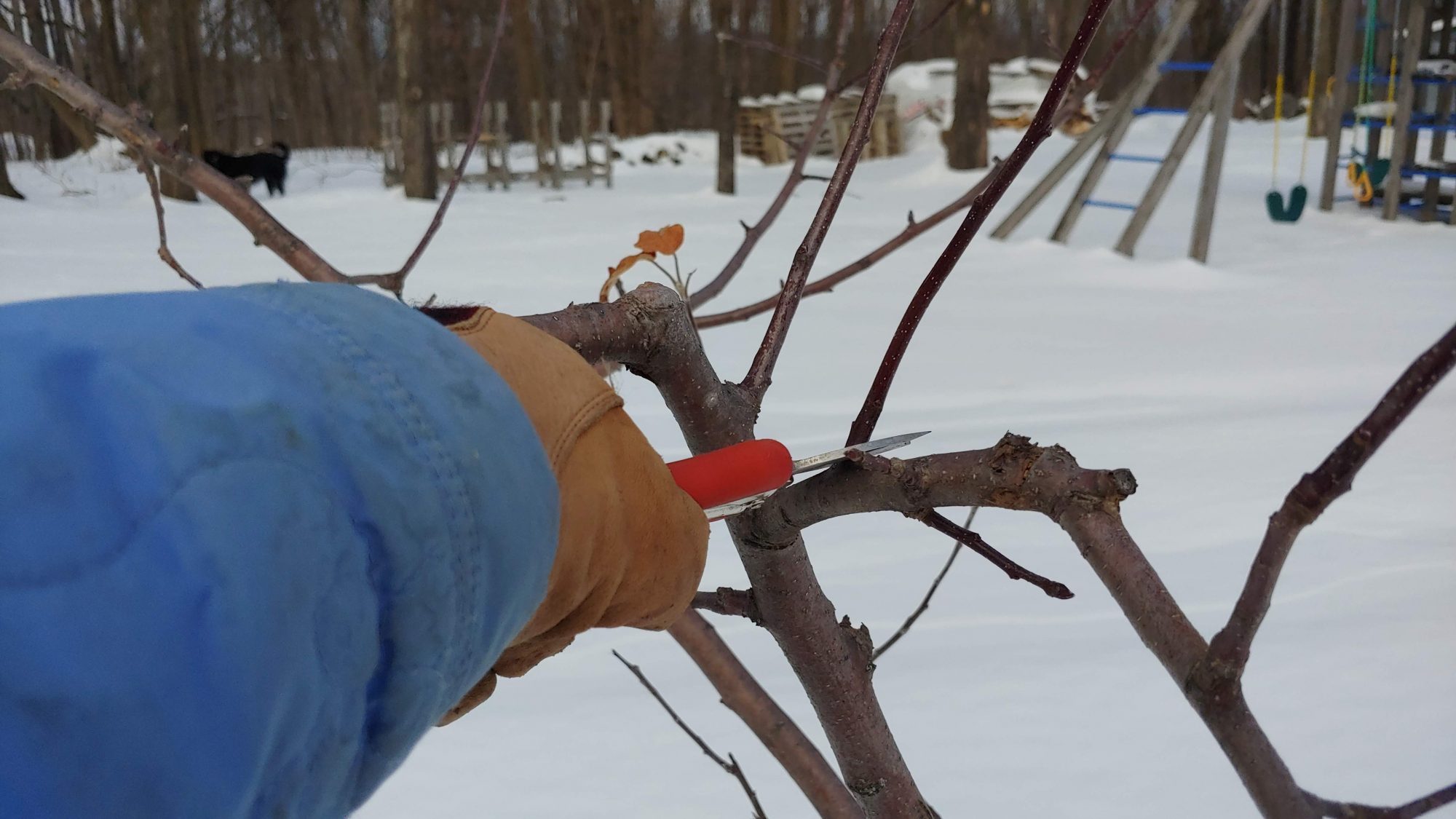
Which branches of an apple tree should you prune?
When pruning your apple tree, focus on pruning the branches that are:
– too big for their location
– crossing over other branches
– dead or damaged
– diseased or infected with pests
– growing in the wrong direction
You can also clip small new branches that are growing straight up from the base of the tree. These drain energy from the tree.
We also prune many branches that are shooting straight up toward the sky. Some of these can be gradually sloped over to form new offshoots, but many of them will grow too tall and high for picking and can be part of the one-third of the tree that you prune.
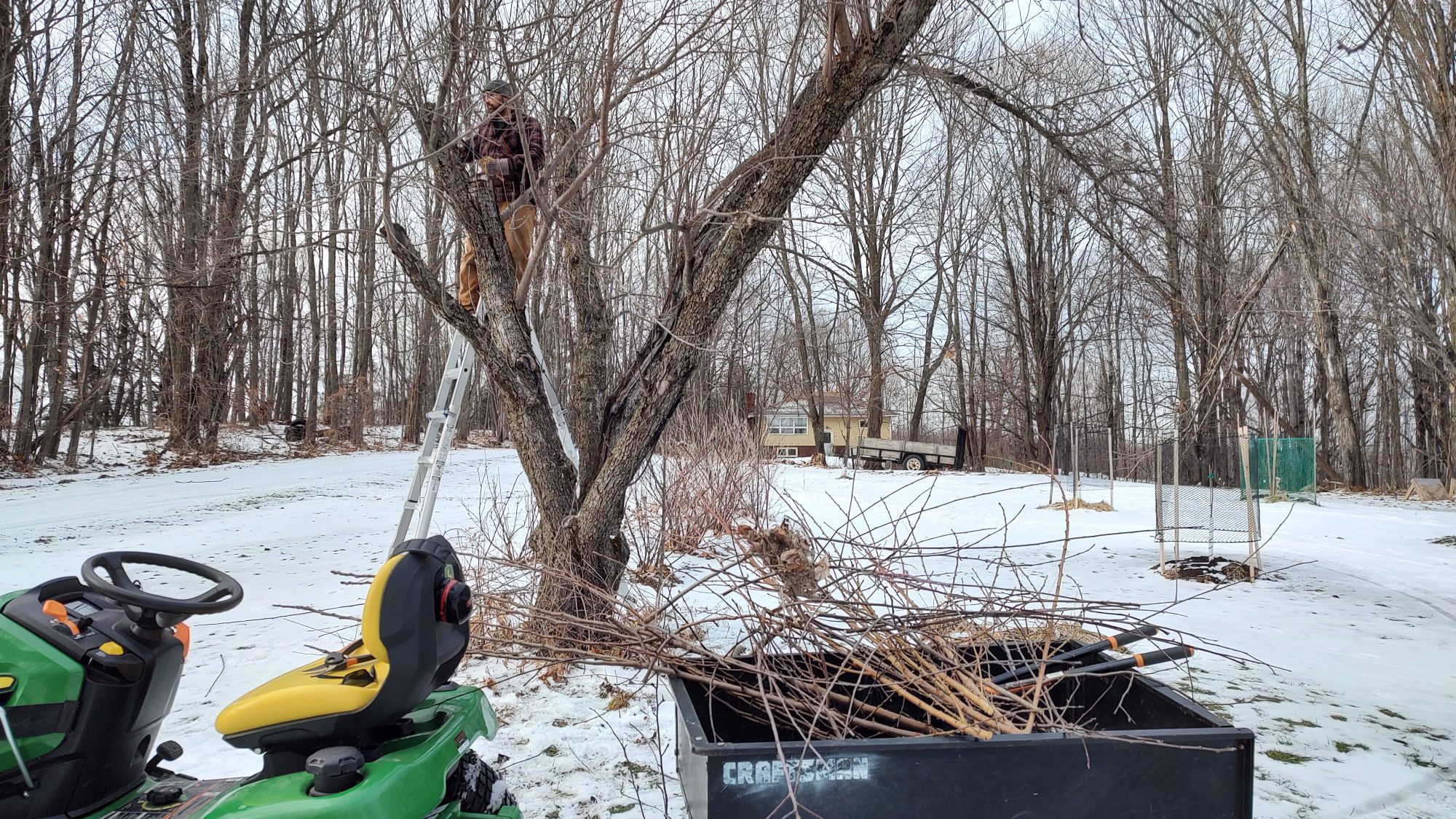
How much of your tree can you prune?
How much pruning you do depends on the type of apple tree you have. There are two main types: those with central leaders (those that grow straight up) or those without central leaders (which branch out).
If your tree is taller than 15 feet, prune the top third of the tree each year. If your tree is shorter than 15 feet, prune the upper and lower branches by about a third each year. As a general rule, you don’t want to prune more than one-third of your apple tree each year because it will weaken the tree.
In addition to height, pruning also depends on the age of your apple tree. The first few years after planting, you should only prune young trees lightly so they can grow strong.
If your tree is young (less than five years), prune it lightly and only remove dead wood and any crossing branches. If the tree is slightly older (six to ten years), prune it like an open-center tree (with a central leader).
If your apple tree is more than 15 years old, prune it as if it were an adult but make sure not to prune off too much wood at once since this can be detrimental for older trees. You can rescue an older apple tree by pruning it over several years, but don’t try to prune it too quickly or it will go into “shock” and may not recover.
If an apple tree is pruned too much in one year, the tree will take longer to recover and produce less fruit than if you prune only one-third each season (or every other).
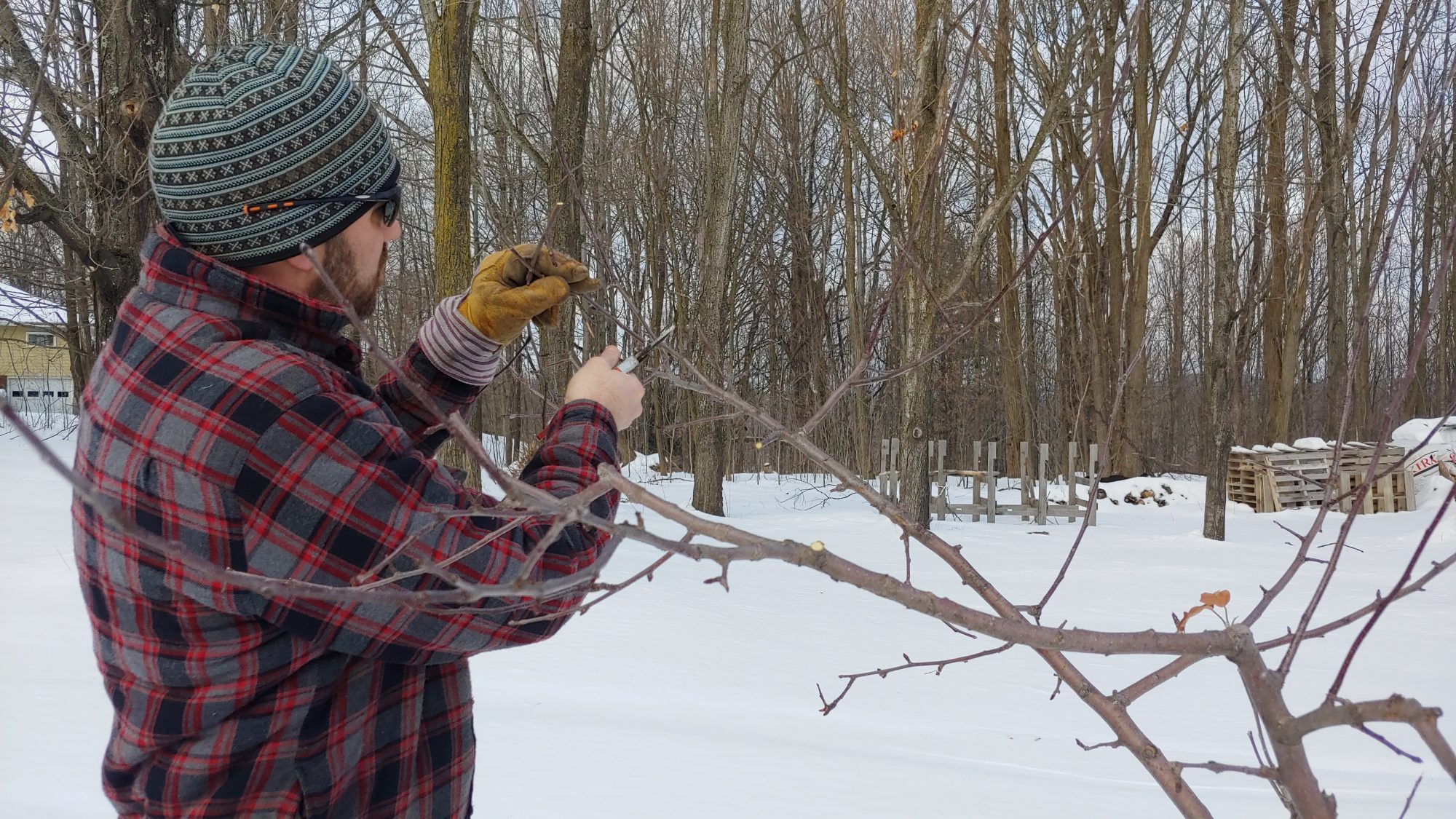
Where do you make your cuts?
There are many different ways to prune an apple tree, but we will discuss two of the most common methods: heading and thinning.
Heading is when you cut a branch off at its junction with another branch (the main stem or a larger branch). This method is used to prune out branches that have grown in the wrong direction or are too big for their location.
Thinning is when you prune a branch at its base so it’s no longer attached to any part of the tree, leaving an open space where light can get through and air circulation improves. This method works well if your goal is to prune out branches that cross over other limbs or are growing too close together and competing for resources (like light).
When pruning, always cut back to an outside bud that’s facing away from the direction you want it to grow in, or prune at a 45-degree angle if there are no buds available on that side of your branch.
If you prune a branch and notice that there is rotting wood underneath the bark, prune above where the rot begins so it doesn’t spread throughout your tree or cause further problems down the road (like attracting pests).
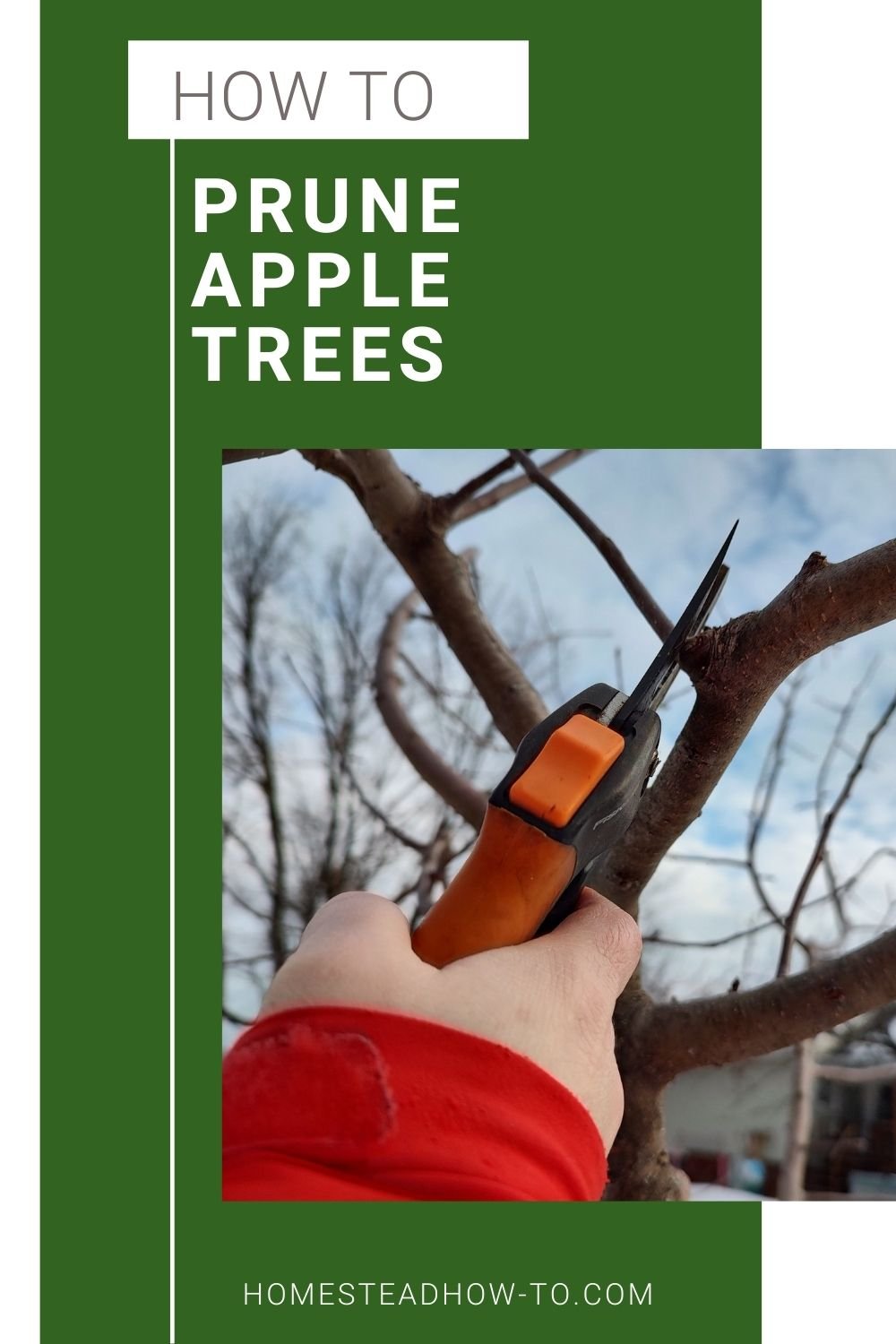
Carrie Williams Howe is an educational leader by day and an aspiring homesteader by night and weekend. She lives on a small homestead in Vermont with her husband, two children, and a rambunctious border collie. She blogs about her family's homestead life at The Happy Hive.


